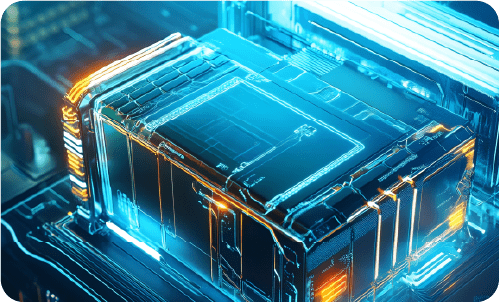Digital twins: Transforming sustainable development solutions for a greener future

Summary
Digital twins are emerging as a transformative solution for businesses striving to balance sustainability with operational efficiency. Through real-time analytics and predictive modeling, they empower businesses to cut emissions and waste, while boosting profitability. This blog highlights real-world applications and outlines steps for organizations to adopt this technology.
Introduction
Consumers today are sensitive about the impact of their purchase decisions on the planet. They are willing to pay a green premium for brands that produce environmentally sustainable products. For instance, when buying passenger vehicles or home appliances, customers are consciously choosing products with net-zero production. And most companies are upholding this with a simple question, “do you want plastic cutlery with your food delivery?” The answer is invariably, “no.”
Investors and stakeholders are responding to this shift in consumer behaviour. They actively seek embedded sustainability reports, recognizing that enterprises rooted in sustainability create long-term value and thrive amidst market uncertainties. Besides, companies adopting circular economy models and ethical sourcing policies strengthen brand reputation and foster deep customer loyalty.
However, many organizations find their sustainability efforts falling short, constrained by outdated practices that fail to address the complexities of today’s environmental challenges. Designing sustainable development solutions, then, demands precision, agility, and intelligent decision-making. For businesses aiming to balance profitability with environmental responsibility, digital twins present a unique opportunity to achieve both.
Once seen primarily as tools for operational modeling, digital twins are now central to sustainable development solutions, reducing energy consumption by up to 20% (Source: Mckinsey) while also optimizing resources, reducing waste generation, and fostering reuse and recycling across operations. As climate targets meet operational pressure, digital twins are becoming an essential accelerant for sustainable transformation. But how exactly do digital twin solutions revolutionize sustainability efforts?
Achieving sustainability: Why digital twins matter
Lack of real-time visibility, wasteful resource allocation, and slow decision-making often leave enterprises exposed to rising costs and regulatory risks, making it difficult to achieve net-zero targets.
Traditional sustainability tools rely on siloed reports, lagging metrics, and static data, limiting their ability to drive real-time impact. In contrast, digital twins become pivotal in the sustainable development solutions conversation with their ability to simulate real-world outcomes before actions are taken. These AI-powered virtual models replicate assets, systems, or entire ecosystems, enabling enterprises to simulate outcomes, optimize processes, and make data-driven decisions, transforming green goals into measurable business value.
Here are a few of its impactful capabilities:
-
Predictive analytics and scenario modeling
Digital twin solutions leverage advanced AI algorithms to simulate and predict energy consumption, waste generation, and environmental impact with precision. By integrating real-time data from IoT sensors and enterprise systems, these models provide a sandbox to test unlimited ‘what-if’ scenarios without real-world consequences. This data-driven strategy aids the company’s journey to net zero while reducing manual efforts and lowering potential errors. -
Lifecycle assessment and circular economy enablement
Powered by AI-driven analytics, digital twins map a product’s entire lifecycle, from raw material sourcing to end-of-life disposal. This granular visibility allows organizations to design products for maximum recyclability and minimal waste. -
Real-time emissions monitoring and reduction
AI-powered digital twin solutions provide continuous, real-time monitoring of carbon emissions across operations. By aggregating data from multiple sources, such as supply chains, manufacturing lines, and logistics, these systems deliver actionable insights to reduce environmental impact.
While the potential is immense, implementing digital twins comes with challenges. Data integration and interoperability remain significant hurdles, as handling vast datasets from IoT sensors, AI models, and enterprise systems requires robust infrastructure. Scalability and the complexity of integration also pose concerns, requiring robust infrastructure and strategic planning.
Additionally, cybersecurity and data governance are critical to maintaining trust and security, as ensuring compliance with evolving regulations such as IEC 62443 is essential for safeguarding sensitive information. However, organizations can mitigate these challenges through platform partnerships, cloud-based simulation environments, and AI orchestration tools that make digital twin adoption faster and more scalable.
The digital twin advantage: Transforming sustainability across key areas
Organizations that embed digital twins into their sustainable development solutions can reduce emissions by up to 20%, while unlocking 15–30% (Source: BCG) efficiency gains across energy and resource consumption. From reducing energy consumption in smart buildings to optimizing supply chains, these models give decision-makers a powerful tool to predict impact, minimize waste, and future-proof operations.
-
Enhancing supply chain sustainability
Supply chains are often riddled with inefficiencies that lead to excessive resource consumption and emissions. Process twins provide end-to-end visibility, enabling organizations to streamline logistics, optimize routes, and adopt greener practices. Additionally, asset twins monitor the condition and performance of transportation assets like trucks, ships, and aircraft. For instance, logistics companies can leverage process twins to track carbon emissions across their supply chains and optimize shipping routes to reduce fuel consumption. Simultaneously, asset twins help maintain vehicles in peak condition, ensuring fuel efficiency and minimizing emissions. -
Driving sustainable manufacturing practices
In manufacturing, asset twins and process twins work together to reduce emissions and resource waste. Asset twins simulate and optimize the performance of individual machines, while process twins model entire production workflows. Asset twins generate actionable insights and make real-time recommendations to minimize raw material use, lower energy demand, and improve yield. For example, automotive manufacturers can use asset twins to simulate assembly line equipment, boosting energy efficiency and reducing material waste by up to 30% (Source: Weforum). Process twins optimize workflows across the factory floor, ensuring seamless coordination between machines and processes. Together, these twins enhance productivity while aligning with sustainability goals. -
Supporting circular economy initiatives
Digital twin solutions play a pivotal role in advancing circular economy strategies by extending product lifecycles and designing for recyclability. Product twins simulate the durability, repairability, and recyclability of products, while asset twins support predictive maintenance to extend the life of physical assets. Consumer electronics firms can use product twins to create modular devices, ensuring easier disassembly, repair, and recycling. These twins also model end-of-life scenarios to maximize material recovery and minimize landfill impact. Similarly, asset twins help businesses maintain equipment in optimal condition, reducing the need for replacements and conserving resources. -
Predictive maintenance for resource conservation
Predictive maintenance powered by asset twins prevents equipment failures, reduces waste, and ensures resource efficiency. By continuously monitoring the condition of machinery, asset twins detect wear and tear before breakdowns occur. This proactive approach minimizes raw material waste and replacement costs. Wind energy operators, for example, can use asset twins to predict turbine maintenance needs, preventing unexpected failures and ensuring continuous, efficient renewable energy generation. Reduced downtime also ensures machinery operates at peak efficiency, lowering energy consumption and improving overall sustainability. -
Enabling sustainable product design
Product twins empower organizations to develop eco-friendly products by simulating different materials, designs, and production methods. Virtual testing allows businesses to identify the most sustainable options before production begins, ensuring minimal environmental impact. Apparel brands can use product twins to test biodegradable fabrics, ensuring product quality and environmental compliance. Lifecycle impact assessments conducted through product twins evaluate the environmental footprint across the entire product lifecycle, from sourcing to disposal. This approach supports greener design choices, helping brands align with evolving consumer expectations and ESG commitments.
The future of digital twins in sustainability: What’s next?
As technologies like generative AI, blockchain, and quantum computing mature, digital twins will evolve to communicate firsthand insight into future disruptions and the strategies to tackle them. And its role in sustainable development solutions will expand further. The integration of generative AI into digital twin ecosystems is set to redefine their capabilities further. Self-optimizing models will enable systems to anticipate inefficiencies, adapt dynamically, and optimize resource consumption autonomously. AI-driven digital twin solutions could potentially simulate and implement real-time adjustments in energy grids, ensuring seamless integration of renewable energy sources while minimizing waste. Similarly, blockchain-enabled digital twins can enhance supply chain transparency, providing immutable records of sustainable practices and fostering trust among stakeholders.
However, to prepare for these advancements, organizations must assess their current infrastructure, define clear sustainability KPIs, and integrate digital twins across key functions.
The future is green with a twin
Digital twins represent a transformative approach to sustainable development. A pathway to eco-conscious operations, real-time visibility, and foresight. By embedding digital twins across key functions, including manufacturing, logistics, and product design, organizations can create closed-loop systems that align profitability with environmental responsibility. The future belongs to organizations that embrace these advancements, not as standalone solutions but as part of a cohesive ecosystem designed to drive sustainable innovation. As regulatory frameworks evolve and consumer expectations shift, strategic adoption of this technology will drive meaningful change and unlock long-term value by aligning profitability with environmental responsibility.






